Changes have been made to Network Rail’s electrification strategy, as a result of stakeholder consultation following publication of draft proposals in May this year.
The Government had previously announced that the Great Western Main Line to Bristol and Swansea, with extensions to Oxford and Newbury, will be funded, along with an infill scheme between Liverpool and Manchester. There are also projects in Scotland covering the Edinburgh-Glasgow route via Falkirk and extension to Dunblane and Alloa.
More detailed analysis has found that the Midland Main Line between Bedford and Sheffield would provide significant benefit, and bring a greater investment return than for the GWML. One of the reasons for this is the growth in demand for East Midlands rail services - since 1995/96 journeys to and from London have grown by 103%, and within the region by 71%. In comparison, destinations served from Paddington have grown by 63% (South West) and 44% (Wales).
The MML was previously seen as a lower priority, as the Meridian trains do not require replacement for some decades. But this ignores the benefits that a cascade of this rolling stock would bring to routes where electrification cannot be easily justified.
In considering strategy, NR has rightly focused on the amount of diesel operation under the wires, recognising that where trains originate or terminate at non-electrified locations it is not economic to adopt methods of changing traction to optimise use of the electrified infrastructure. There are obvious schemes that would remove this unnecessary impact on the environment. Electric freight haulage suffers particularly from this obstacle, with only 5% of activity handled by this form of traction.
In developing the strategy, two drivers of change are identified: the lower cost of electric traction in terms of fuel, train reliability and reduced complexity, and the need to replace life-expired diesel-powered rolling stock. Lower costs are significant, with a reduction of up to 50% in fuel and 33% in train maintenance expenses. Statistics for train reliability show that diesel vehicles typically record 11,000 miles per casualty, compared with 21,000 miles for electric rolling stock. The term casualty is used when any form of rolling stock failure causes time to be lost - it is not a measure of complete train failure.
One benefit claimed for electric passenger vehicles is greater seating capacity, which I would discount because recent design has been heavily criticised by user groups (layouts are cramped and fail to take account of the increasing physical size of many passengers). Three by two seating is no longer acceptable for anything other than short journeys, and the Transport for London solution of providing greater standing area is preferred by passengers.
There is particular benefit in the electrification of diversionary routes. The provision of diesel haulage for electric trains when engineering possessions are necessary has largely disappeared, because there are few diesel locomotives available capable of providing power for on-board equipment such as air conditioning. As a result alternative road services have to be provided, which is an increasing turn-off for many passengers. In fact, most train operators can demonstrate a significant loss of revenue if the train service is disrupted in this way.
The picture painted does have a flip side, all too often ignored by policy makers but a source of major frustration to passengers and freight customers. As soon as the words ‘wires down’ are announced there is the inevitability of major delays, to the point where it is often not worth making the journey.
Some regrettable infrastructure design decisions were made on routes such as the East Coast Main Line, where wire spans cover all four lines - as a result relatively small equipment failures mean no trains can be operated on any line.
Network Rail figures for the reliability of overhead line equipment show that 5% of infrastructure delay minutes are caused by such failures. There were more than 100 such instances in 2007/8, significantly affecting services. Routine maintenance also causes complete line closures, even on sections of four-track railway.
It is essential that new equipment design has reliability and ease of maintenance as a core requirement. That has been fully recognised within the strategy, and a working party has been established with the Rail Industry Association to identify how design can eradicate known causes of failure, such as eliminating restricted clearances that cause flashovers and shorting, and reducing conductor creep and corrosion.
In identifying the most pressing cases for electrification NR identified four gaps, covering the efficient operation of passenger services, freight, diversionary routes and the opportunity to run new services.
The wishlist in respect of passenger operation is much more extensive than the usual suspects, including coverage that reaches Inverness, Aberdeen, Scarborough, Holyhead, Milford Haven and Penzance. These routes are greatly reduced once a stricter socio-economic appraisal is applied, and for main lines the priorities can be summarised as GWML (including the Berks and Hants), North TransPennine, CrossCountry, and Midland Main Line. For each of these wiring would be provided for connecting secondary lines.
Also listed as a route with a good economic return is the Basingstoke-Exeter section of the former Southern Region, where overhead rather than third rail equipment is preferred. An attraction of this potential scheme would be the elimination of diesel traction at Waterloo, although there would be the complication of dual voltage trains.
For freight the possible schemes are more familiar, and cover major freight arteries such as Stowmarket to Peterborough, Peterborough to Doncaster (Joint Line), and Peterborough-Nuneaton. Routes to major terminals such as Hunterston, Felixstowe, and Seaforth are also included.
Schemes driven by the needs of passenger and freight service in themselves provide many diversionary routes, but additionally Newcastle to Carlisle is listed along with various lines in the West Midlands and North West. There are few ‘new service routes’ other than a wiring extension from Wolverhampton to Shrewsbury and extension of the Merseyrail network.
For a range of reasons electrification fell out of favour as an aspiration for the privatised railway, but opinion has turned and economic and operational benefits have again been recognised. Timescales remain uncertain, but there is little doubt that a greater percentage of both route mileage and train working will feature electric traction in the years ahead.

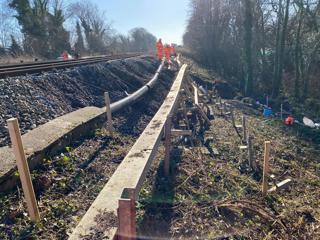
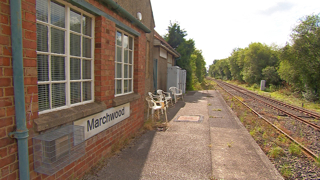
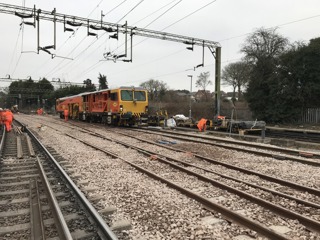
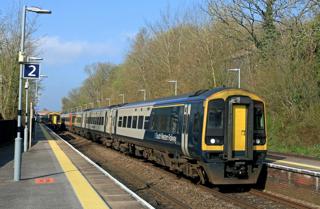
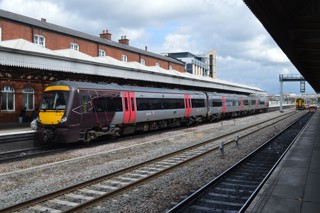











bob - 15/01/2015 18:26
lack of investment of the past 30yrs as no infill's for instance the Birmingham to Nuneaton could be electrified that would be a diversionary route for the Birmingham-London route, and once the Coventry to oxford routes spine electrification is done the Manchester-to born mouth cross-country will be all electric the will need to order shortly